We're open to your questions on the Naked Scientists this week, finding out how photosynthesis works underwater, exploring the sex lives of barnacles and discussing if rockets punch holes in the ozone layer. Plus, a viral cause of hypertension, how bees stick to petals like velcro, and a new, super-dense deuterium - 130,000 times denser than water! We hear about the new generation of eBook readers, and in Kitchen Science Dave vacuums his bathroom scales to weigh the air!
In this episode
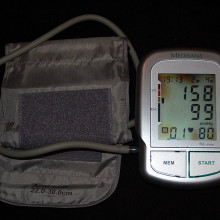
Virus to blame for blood pressure
US Scientists have discovered that a common human viral infection may be linked to hypertension, also known as high blood pressure.
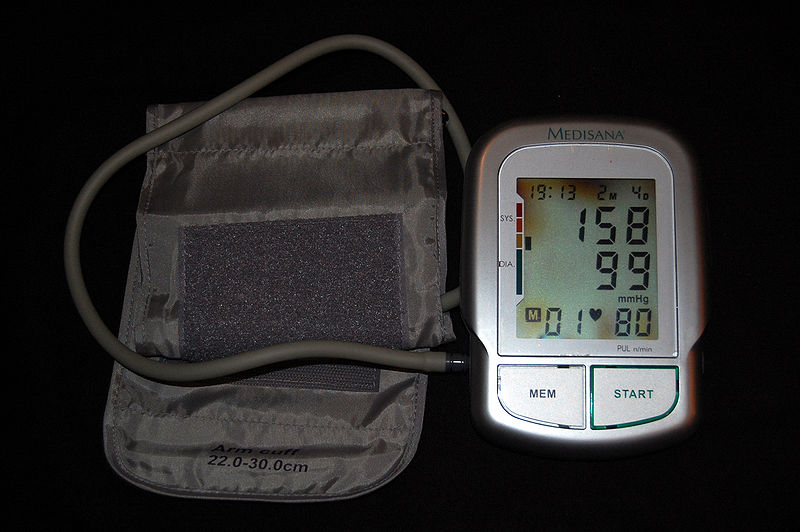 Writing in PLoS Pathogens, Beth Israel Deconess Medical Center researcher Clyde Crumpacker and his team infected mice with the rodent equivalent of CMV (cytomegalovirus), which infects 80% of human adults. They found that, compared with uninfected controls, the CMV-exposed animals had significantly higher blood pressure in the weeks after the infection.
Writing in PLoS Pathogens, Beth Israel Deconess Medical Center researcher Clyde Crumpacker and his team infected mice with the rodent equivalent of CMV (cytomegalovirus), which infects 80% of human adults. They found that, compared with uninfected controls, the CMV-exposed animals had significantly higher blood pressure in the weeks after the infection.
They also fed a second group of mice on a high-fat diet and infected half of them with the virus. In the CMV-exposed group the animals again developed hypertension but also showed signs of early atherosclerosis (arterial disease).
To find out why, the team studied the animal's blood vessels and found that the virus was establishing a persistent infection in the vessel wall that led to the production of inflammatory hormones called cytokines including IL-6, TNF-alpha and MCP-1, which have been linked previously to vascular disease. The team also found increases in the activity of two genes that directly control blood pressure - renin and angiotensin.
Next, to find out whether the results also apply to humans the team infected human umbilical cord blood vessels with human CMV with the same results. These findings are important because CMV is part of the herpes virus family, members of which characteristically establish life-long "latent" infections, meaning that CMV is well-placed to provoke long-term injury to blood vessels that could lead to vascular disease. The next step will be to discover whether there is a real association between human onset of hypertension and CMV infection, which increases in prevalence with increasing age, just like blood pressure diagnoses...
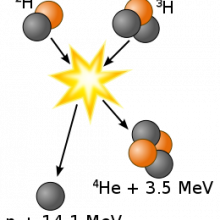
Ultradense deuterium
For a long time researchers have been interested in hydrogen because it is the most common element in the universe and because it fuels the nuclear fusion reactions that power stars. Nuclear fusion involves reacting light atomic such as hydrogen, or its isotopes deuterium or tritium together to form heavier elements. The problem is that in order to get the nuclei to react you have to get them very close together and because they repel one another this is very difficult. To get a decent rate of reaction you need to either have a very high temperature and or a very high density which is difficult because hydrogen is a gas.
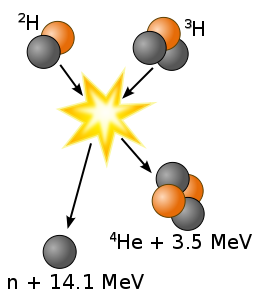 For this reason scientists have been interested in finding other forms of hydrogen which are much more dense, one that has been known about for a long time is metallic hydrogen which exists in the centre of planets such a Jupiter and has a density close to that of water.
For this reason scientists have been interested in finding other forms of hydrogen which are much more dense, one that has been known about for a long time is metallic hydrogen which exists in the centre of planets such a Jupiter and has a density close to that of water.
However researchers in Gothenburg, Sweden have been splitting deuterium molecules up using a catalyst and an electrical field, and studying what is produced by firing a laser into the products which will rip electrons off a pair of atoms. This means that you have two positively charged nuclei very close to each other, which immediately fly apart in what's called a coulomb explosion.
The researchers were measuring the energy of the particles being thrown off and discovered some which appear to have over 60 times as much energy as those from metallic hydrogen. This would relate to a bond length of about 2.3pm or a material with a density of 130,000 times that of water.
This is very interesting because if the nuclei start off this close together they would need far less energy to fuse than conventionally, although of course the lifetimes are measured in nanoseconds and the scientists have only made truly microscopic amounts of this material so far.
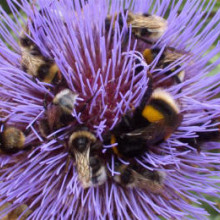
Natural Velcro helps bees get a grip
Flowers evolved a natural form of Velcro on their petals to help insects get a grip making it easier for them to pay a visit and collect nectar while carrying out that vital job of pollination.
Publishing in the journal Current Biology, Beverly Glover from Cambridge University led a team of botanists who set out to find a solution the long-standing mystery of why the flowers of many insect-pollinated plants are covered in cells shaped like minute cones or pyramids.
Glover and her team made artificial epoxy resin flowers both with and without the microscopic patterns of cone-shaped cells. They put sugar solution in the centre of the flowers and presented them to bumblebees in the laboratory giving them a choice of the smooth or rough petals.
When the petals were laid out horizontally, the bees had no particular preference for the rough or smooth petals, visiting each about half of the time. But when the petals were sloped at a steep angle, up until they were vertical, the bees preferentially visited the rough petals rather than the smooth ones.
High-speed films of the foraging bees revealed why they preferred visiting the rough petals. On the vertical smooth flowers, the bees were unable to get a grip: their feet were constantly slipping and they had to keep beating their wings to stay on the flower. Meanwhile on the rough petals, the bees quickly found a foothold and they could settle down and stop beating their wings, which saves them a lot of energy making their foraging visits far more efficient.
Previous studies have shown that bees can tell the difference between rough and smooth petals, probably by feeling them with tiny sensory hairs on the ends of their antennae. Glover and the team also tested out bees with a range of real snapdragon flowers, some with normal rough petals and a mutant strain with smooth petals. They found that when the flowers were held vertically, the bees visited the rough petals more often, presumably because they could get a better grip.
So it seems that providing insects with a safe landing pad, is one rather elegant and simple way that flowers make sure they pass on their genes to the next generation.
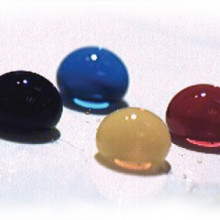
Droplet Display technology
Most computer and TV displays work by actually emitting light, whether this is produced by making a phosphor screen glow in conventional TVs and plasma screens or from a fluorescent tube behind an liquid crystal panel in a modern LCD displays. This is great in a dark room but if you are outside on a bright day the sunlight completely overwhelms the light from the screen and of course making all that light uses up a significant amount of power so the displays tend to be power hungry.
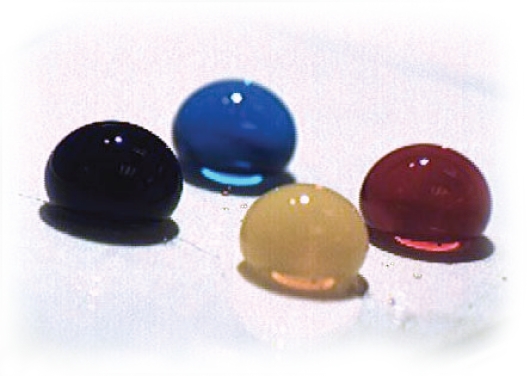 The solution is to make a display that works like a piece of paper, reflecting light from outside, so no matter how bright it gets you can still see the picture, and you are not producing light so it needs less power. There are several technologies which do this in black and white such as the e-ink on some e-book readers, but they only change very slowly.
The solution is to make a display that works like a piece of paper, reflecting light from outside, so no matter how bright it gets you can still see the picture, and you are not producing light so it needs less power. There are several technologies which do this in black and white such as the e-ink on some e-book readers, but they only change very slowly.
However researchers from the University of Cincinnati may have a solution that will give you full colour at video speeds. Their technology works using droplets of ink sandwiched between two hydrophobic surfaces. Normally surface tension pulls an ink drop into a sphere and it sits in a small well in the centre of a pixel. But if you apply a voltage the ink is attracted to the outer surface and it spreads out over the whole of the pixel changing the colour to that of the ink. If you remove the field the droplet shrinks back again, and if you make the pixels small it can switch very quickly. At the moment they have prototypes which can switch in 50ms which is almost fast enough for video applications but they think that they can improve it to about 1ms which is far faster than is needed.
This is still very much a prototype but they have monochrome displays working and they see no reason that they couldn't be made to roll up, so in a few years time you may be carrying one of these displays around in your pocket.
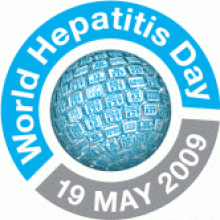
13:43 - World Hepatitis Day
World Hepatitis Day
with Dr Joe Grove, Birmingham University
Chris Smith - Now it might surprise you to know that around the world about one person in every 12 is actually living with a chronic infection of their liver, usually hepatitis C or hepatitis B, and those numbers totally overwhelm the numbers of people with pandemics that we are well acquainted with, things like HIV and flu. Not many people actually know about the massive disease burden that's caused by these infectious causes of hepatitis and so to try and remedy this on the 19th May what has been set up is being called World Hepatitis Day and all over the world people will be gathering to try and run events to raise awareness of this. At the University of Birmingham researchers including Dr. Joe Grove will be doing just that and he is with us now to explain a bit about what they are trying to achieve. Hello Joe.
Joe Grove - Hi Chris.
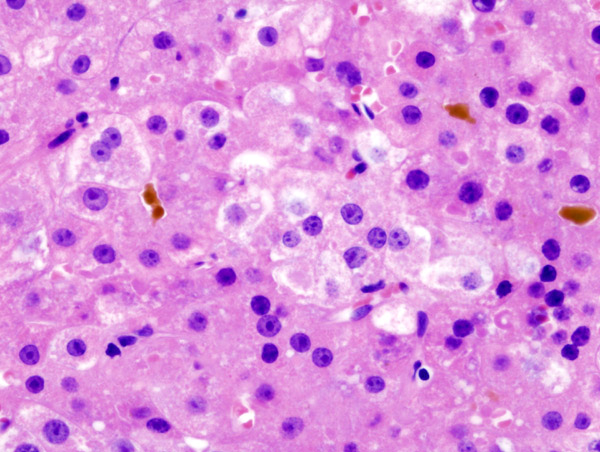 Chris Smith - Welcome to the Naked Scientists. So tell us what you are actually hoping to achieve with the World Hepatitis Day.
Chris Smith - Welcome to the Naked Scientists. So tell us what you are actually hoping to achieve with the World Hepatitis Day.
Joe Grove - Okay, so like you said World Hepatitis Day would be a lot like World AIDS Day, to raise national awareness of the problem and we are holding an event to highlight the interesting scientific and clinical work that's done here in Birmingham. The aim of the event is to raise awareness with the public and hopefully reach out to people to get tested. Also to engage with the patient community that's in the U.K. and to highlight the important work that's done at the University.
Chris Smith - What will you be doing during the day to tell people a bit about hepatitis B and hepatitis C?
Joe Grove - So we have a couple of MPs, Dr Lynn Jones who is our local constituency MP and Dr Brian Iddon who is a member of All-Party Hepatology Groups. They decide liver policy in parliament. They will be coming down. Also representatives from the local press and the local community and the patient community. We will be giving them a series of talks to outline the scientific research we do here on hepatitis C specifically but also the work that's done to treat both hepatitis B and C in Birmingham and the clinical research such as clinical trials that are carried out here. And then we will be giving them a tour of the laboratories and also the clinical research facility in the hospital.
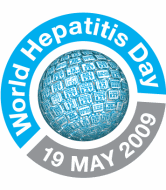 Chris Smith - So let's just look at the actual disease that these agents cause and why you need to raise awareness about them. What are hepatitis B and C and why are they a problem?
Chris Smith - So let's just look at the actual disease that these agents cause and why you need to raise awareness about them. What are hepatitis B and C and why are they a problem?
Joe Grove - Hepatitis simply means an inflammation of the liver and if you had acute hepatitis, that is a short hepatitis, that's not necessarily a problem. Viruses like hepatitis A or E cause acute hepatitis that self-resolve. Hepatitis B and C are capable of establishing a persistent infection. So individuals may be infected for the duration of their life. Now this becomes a particular problem because if you have hepatitis over this extended period of time you will start to get other symptoms such as liver cirrhosis and possibly even liver cancer. In the case of hepatitis C there are up to 500,000 people in the U.K. with an infection but 80% of those do not know about it.
Chris Smith - So that makes it a major issue because if they don't know it they can pass it on because these are of course blood-borne viruses. You spread them by sharing blood, sharing needles, having sex with people. So people, if they don't know they've got it can pass them on. So I guess raising awareness about them in the general population is very important because that encourages people to get tested.
Joe Grove - Yes, of course and also there are actually treatments. It is possible to treat hepatitis C and you have a reasonably good outcome of treatment. We have around 50% of patients resolving. However, people often don't seek medical attention until the disease has become particularly apparent and by which stage it is harder to treat. So if there is anyone out there who are worried that they may have been exposed, they should get tested and then they got a much better chance of getting a resolution to the illness.
 Chris Smith - Thank you very much Joe. That was Dr. Joe Grove who is a researcher at Birmingham University and he is hosting what will be Birmingham's contribution to World Hepatitis Day on Tuesday - the 19th May 2009. Their events are actually on Monday 18th, so that's tomorrow. So thank you very much Joe Grove for joining us on this week's Naked Scientists.
Chris Smith - Thank you very much Joe. That was Dr. Joe Grove who is a researcher at Birmingham University and he is hosting what will be Birmingham's contribution to World Hepatitis Day on Tuesday - the 19th May 2009. Their events are actually on Monday 18th, so that's tomorrow. So thank you very much Joe Grove for joining us on this week's Naked Scientists.

Why are electric kettles so noisy?
Chris Smith - Ah, yes my kettle is no exception and the reason that kettles are noisy, they make that sort of thumping and bashing noise as they boil and then the noise intensifies as they warm up and then it goes silent as they boil. It is because of the way that the heat is being transferred into the water. So you have an electric element inside the kettle, a high current is passing through that element which makes it get hot. The heat from the element is therefore transferred by convection and conduction locally onto the water molecules around the element; they then get excited and get hot. So you have a bubble of hot water around the element which tries to expand and it also floats upwards away from the element because, of course, warm things rise but as it rises of course it loses its heat again to all of the surrounding water. So this bubble of water and water vapour collapses in on itself very quickly and that's cavitation and you get a shocking, sort of knocking noise. So those thumps that you hear and the sort of 'shhh' hissing that you hear, as the water vapour bubbles collapsing on themselves and emitting some sound waves, that's what the sound is.
Dave - Sounds of the bubbles, as the water is boiling, forming little bubbles of steam and as they rise up in the colder water they shrink and collapse and then smash into one another and make lots of noise. So it gets a lot quieter once bubbles get all the way up to the surface and they stop cavitating.
Helen Scales - It makes more noise I think when I have less water because I try and have as little as I need for a cup of tea, obviously covering the element but not lots more to save on energy and I think that's noisier.
Chris Smith - It could be there's a bigger resonant cavity inside the kettle because the bubble makes a sort of note inside the cattle and if you got lots of free space then the air will help to move around and bounce and sound around inside the kettle like an echo chamber. So that might be why you are hearing more sounds, probably what's going on.
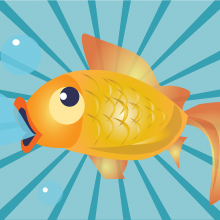
Do Fish Sleep?
I have got a question for you Helen here. It is from Glenn Colson who says: 'Do fish sleep?'
Helen Scales - Well I think Diana talked about on Question of the Week a couple of weeks ago about whether fish have eyelids and they don't. So can they sleep? The answer is yes, they can but it also depends on how you define what sleep is because in humans the transition into sleep involves changes in the patterns of brainwaves in an area of our brain called the neocortex and fish don't really have the same development in their neocortical region as mammals, really.
So it's kind of difficult to say in the same way what sleep really means for fish but they do. If you count up things like a reduced metabolic rate and slowing down activity then they do seem to sleep and Zebra fish, which are fresh water fish, have been studied in the laboratory. If you watch them, and I think this is rather sweet idea that. You can watch them during the day and they will actually sort of doze and their tails droop down and they stop moving around at certain times of the day and they do seem to sleep.
That's one thing and in Antarctica, actually only last year they discovered the first hibernating fish and apart from mudfish that aestivate and keep themselves alive when things dry out. In Antarctica they actually slow down and stop feeding and their heart rate slows down. They used heart rate monitors on these fish to see what was going on and we think that it was probably because it gets darker in the winter in Antarctica. In fact it gets completely dark because there's no sun and they find it hard tracking down their prey because this prey is still out there but they are visual hunters and without the light around they find it very difficult to find their food so they sort of stop.
Chris Smith - They just sleep.
Helen Scales - And they're a bit like bears. Some bears don't sleep the entire winter. They will actually kind of wake up every few weeks, have a little wander around, find a bit food, go back and sleep again. That's what these Antarctic cod seem to be doing as well.
Chris Smith - It's quite interesting because Glenn has written a few things he spotted and this question was provoked by things he actually saw himself. He says: 'A few years ago I was on a night dive in the sea of Cortez and we actually think we saw a fish sleeping in a number of different ways. There were fish in caves or nooks that were awake but only slightly responsive. There were also fish lying on the sea floor looking like they were dozing soundly and they weren't at all perturbed by our diving light and there were others that had wrapped themselves in a cocoon of slime that seemed to act almost like a protective blanket.'
He says, 'I suspect they have nightmares as well because as we watched a large moray eel swam slowly across the bottom of the seafloor stopping to sniff prospective meals as they were snoozing and then choosing his favourites but the moray left the blanketed fish alone.' A wrass he believes (which he found interesting) because he said that the eels and they normally find it quite tasty.
Helen Scales - Yes, they are parrot fish and they produce this kind of sleeping bags and we do think that stops them being able to smell, the predators can't smell them but there are other fish that come awake at night. In fact if you go night diving you see a completely different eco system really because the ones that were sleep during the day tend to come out. They are often coloured red because they actually, that means they can't be seen at night because the red colour is absorbed when light is absorbed in the water. So you see kind of a shift change in day and night fish when you go night diving.
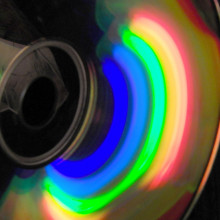
How do re-writable CDs and DVDs work?
Dave Ansell took on this question...
Dave - Okay. A normal CD works by just having a sheet of aluminium with lots of sort of "pits" in it. You make the pits by having a glass. You etch a glass object which you push into the sheet of aluminium and that makes the bumps in the aluminium; you then shine a laser on it. They laser light gets reflected differently from the tops and bottoms of the pits and you can read that information and then that information gets turned into sound and you can hear it.
The sheet of aluminium is a shiny thing. It's encased in polycarbonate and so it's nice and protected. A recordable CD works by having the same polycarbonate disc but they instead have a layer of dye over the top. This dye is sensitive to light and a shiny surface is placed behind it. There are various different kinds of dye; some are a little better than others and survive a longer time: that's why you have different colours of CDs and CD-Rs, and so it changes colour...
Chris - Oh, so when you zap it with a laser, rather than burning hole in it, what it actually does is changes the dye configuration so that what the reader is looking for is a dark spot rather than a hole.
Dave - Yes, and the dye changes colour.
Chris - And then when you come along with another laser you can what, reset the dye to it's original colour which overwrites the impression?
Dave - I think they then hit it with a different pair of lasers, which heats it up to a different temperature which then resets it; then it cools down slowly and so it zeros everything. Then you can come along with the second type of laser and rewrite it.
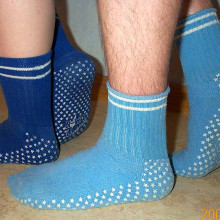
Do cold feet mean more colds?
Chris Smith - My own take on this is no, because I have chronically cold feet. But they say "cold feet and cold hands - warm heart" so I am all right. But there's no real evidence connecting going out in the cold with catching a cold. It's one of those urban legends that gets trotted out, "don't go out with wet hair because you might catch a cold."The only real evidence in this favour was there was some studies done in Scandinavia in people who were dong very severe exercise and they found that in those individuals, exposed to very cold extremes as well, taking some vitamin C did help to ward off colds, but on the whole getting cold doesn't increase your risk. It's actually physically being exposed to the pathogen that increases your risk.The only sort of exception to that is if you get very very cold and you get so cold that you get damage to your mucus membranes, your linings of your nose in your mouth, then of course you might make yourself, if you get cracked skin or break down of the mucus membranes more vulnerable to say a bacterial infection coming in on top. So you have to be careful for that but there's not actually any evidence connecting getting cold or washing your hair and catching more pneumonias or colds or viruses. So you are probably okay Emil.

30:33 - Tech Update - E-Books and E-Readers
Tech Update - E-Books and E-Readers
with Chris Vallance, BBC Technology Correspondent
Meera Senthillingham - Yes, I am at the BBC television centre in White City in London with our tech expert Chris Vallance. How are you Chris?
Chris Vallance - I am fine, although the sun seems to have disappeared today, doesn't it? After such a lovely week and then we sat outside and it's actually grey and miserable but there we go, that's British summers for you...
 Meera Senthillingham - Well, other than the horrible weather what have you got lined up for us in terms of technology this month?
Meera Senthillingham - Well, other than the horrible weather what have you got lined up for us in terms of technology this month?
Chris Vallance - Well, when the weather closes in there's nothing better than to curl up with a good book. Of course there has been lot of tech excitement around the launch of the latest version of Amazon's E-book reader with a bigger screen.
Lot of excitement about whether e-books are one of the ways forward for publishing and it's not just Amazon that are in there, there are number of other companies vying for this space. We got Sony. We are even expecting a couple of British entrants into the market; two E-book Readers due out maybe later in the year, one from a company called Cool-er and the other one from a company called Plastic Logic which I believe that technology has been featured on the Naked Scientists before, so a lot of excitement in this space.
Publishing and technology have been well developing hand-in-hand for a while now. A lot of publishers are starting to get into social media in a really big way. as a way of marketing books, as a way of engaging with fans, things like YouTube, Twitter, Blogging, all of that publishers are starting to embrace.
I have been speaking to one of the guys, if you like, 'leading the charge' into this field in the publishing industry. His name is Jeremy Ettinghausen and he is the digital publisher at Penguin Books.
Jeremy Ettinghausen - For some authors blogging and going on Twitter and making videos on YouTube has given them routes to get closer to their audience and engage readers outside the very specific work of their book.
Chris Vallance - For those authors that do engage in it, what's in it for them?
Jeremy Etthinghausen - It allows them to tell the readers where they are going to be if they are doing events, tell them news about publishing events, when their new book's coming out, special offers, that sort of things but it allows the reader to get closer to the author and that in terms of pure kind of commercial things can't help but sell more books.(34:10).
So 'We tell stories' was the project where we paired up authors and game designers. We had six stories running over six weeks, the first one was told on Google Maps and you could follow the character as he explored England and had several adventures.
The last story was by Mohsin Hamid who was short-listed for the Booker Prize last year and he made a very elegant take on a choose-your-own-adventure story and the idea of you know, very literary, prize-winning author creating a kind of detailed schematic for the structure of a choose-your-own-adventure story was absolutely thrilling.
 Chris Vallance - And that was Jeremy Ettinghausen talking about how social media is important for publishers.
Chris Vallance - And that was Jeremy Ettinghausen talking about how social media is important for publishers.
Meera Senthillingham - Now what about the authors involved in this technology?
Chris Vallance - Well, it's fair to say not all authors are interested in this at all but I have been speaking to one, he uses Twitter quite a lot to engage with fans and to talk about his work. His name is Nick Harkaway and he is the author of the book 'Gone away world'.
Nick Harkaway - The wonderful thing about Twitter is not only is it a kind of level playing field where your reader is confined to you and you can talk to them and you don't have to worry about this concept of the 'fan', you can just be people talking about stuff that you like but you can also find authors and you can track down people you admire and say 'I really like you', and then feel very embarrassed about it afterwards but it works very well.
I think the really important thing is to be genuine. There are lot of people on social networking sites and Twitter in particular who have that publicist kind of Twitting for them every second and its very obvious and it's slightly disappointing. You can't just kind of implant the idea that they must go and buy your book in someone's head, like an alien egg, you just leave there; it will hatch and you get sort of two pounds nienty nine or whatever your royalty is. You have to be there and engage in the discussion and that's probably the most important thing.
Chris Vallance - And it's not limited by genre?
Nick Harkaway - Ben Ocre-twitted a poem line-by-line the other day and P.D. Smith who wrote 'Doomsday men' - fantastic book, is constantly Twittering. You find everybody. Susan Hill has a weblog, it's all sorts.
Chris Vallance - Are there any dangers?
Nick Harkaway - Yes, that you spend too much time and have too much fun, other than that I think it's no more dangerous than taking a bus.
Chris Vallance - That was author Nick Harkaway. So we got two developments - one, the hardware, the advent of e-books and the other in the way in which you engage with your favourite writers, that you might be able to chat them on Twitter. You don't have to write a letter to the publisher anymore.
Meera Senthillingham - Now what are your thoughts on this Chris, how popular do you think e-books will become?
Chris Vallance - I don't know. There's something about the experience of having a book that's unique to the physical product, the feel of the book, the way it's published, the cover and all of that and let's face it, you don't want to start reading your e-book in the bath and books are kind of - the fact that they're slightly disposable and get dog eared, that's kind of part of the fun of a book, isn't it?
But on the other hand books do take up a lot of space. I mean in my own home practically every surface is covered with books. It would be a lot nicer if I could just reduce it down into an electronic format. So I guess there are pros and cons.
I think what's interesting is the way that technology is trying to replicate some of that physical experience of having a book, the screens on these devices are reflective they're not luminous. They feel more like paper they're useing this e-ink technology.
I think the really interesting thing would be how these devices effect sales of publications and newspapers. Obviously that's the magazines and newspapers are having a difficult time of it at the moment. Will reading them on e-books help rejuvenate that industry? I think a lots of interesting questions. I don't know the answer to your question, very long way of saying that. I don't know whether they will replace existing books. My guess is probably not.
Helen Scales - So E-books may not replace genuine old-fashioned books but they will certainly save us some space around the house and it's great the authors can now interact with their readers, gives me something to think about as well because my first book is coming out later this year.
That was Chris Vallance talking to Meera Senthillingham about the latest technology in the field of electronic books or e-books.
Chris Smith - I don't think that these electronic formats are quite as tangible. They are not as nice as the paper book. I just can't feel I can bond with them the same way as I can with...
Helen Scales - No, you can't, and you need them on your shelves and I think, yeah you say, Amazon never got rid of bookstores still. I mean they are obviously going through problems at the moment but economic problems at the moment but we still love to go and browse on bookshops, don't we? There's a certain feel and smell about it that we all love.
Chris Smith - Absolutely. This is the Naked Scientist with Chris Smith, with Dave Ansell and with Helen Scales. It's our science pone-in show. If you have any science questions for us then do drop us a line. It's 0845 30 50 007 on the phone, our text number 07786 20 1960 - the email address for the program as ever - Chris@thenakedscientists.com.
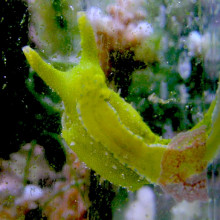
How does evolution produce new genes?
Chris Smith - So in other words you've got huge panoply of life on earth, all of it descended from some ancestor that must have got started something like 3.9 billion years ago, that's when we think life started on earth, how do we have this massive and dramatic genetic diversity we have on earth today?
Well the answer is that we use as our genetic material DNA and some organisms use RNA, they are two related molecules and the basis of evolution and inheritance is that that genetic material has to be copied and passed on from one generation to the next in gametes, in other words, sperms and eggs.
Now in copying the DNA, a job which is done by enzymes - miniature machines in cells that read a DNA chain and then make an identical (hopefully) copy of it; then you end up with faithful transmission of the genetic message from one cell to another. But occasionally mistakes occur and there are a variety of reasons why mistakes can occur. One of them is that those enzymes that do the copying make a mistake, it's like me copying a book - I've got a book opened in front of me and I'm reading off the book and making a new copy in a second book, I might miss-copy and make some mistakes. Secondly, there are things coming in from the environment that can damage DNA. There are drugs, there are chemicals in the environment; there's also radiation in the environment that could be ultraviolet radiation, it could be chemicals you take into your body, you could be living in Aberdeen and breathing the radon gas that comes out of the granite there. Anything radioactive that gets into your body can also damage DNA. If that happens to the cells that are making your gametes, your sperms or eggs, that can lead to mutations - changes in DNA. This can cause DNA to rearrange itself, bits of DNA can get copied or duplicated, and this means that there's the opportunity for new genetic combinations to emerge; and once they emerge they can then get co-opted or changed or manipulated in order to do other jobs; and we know this happens because if you look in human DNA you can find the ghosts of genes long dead hidden in our genetic closet. You can find for example, lots of old genes that used to make our haemoglobin which are now no longer effective, and no longer functioning. They're called pseudogenes. But this is where we have copied the genes somehow and then its becomes deactivated but it's still in the genome. Now some other process could come along and reactivate that gene and use it for something else so it's a way of making genetic diversity.
Another way this happens, is something called transposons, you have bits of genetic material that can literally jump and they take themselves out of one bit of your genetic material and put themselves somewhere else carrying bits of DNA with them, and so this is another way of rearranging your genome and producing new forms of genetic sequences which can then become other important genes. A final way is viruses, because viruses - certain kinds of viruses actually physically insert their genetic material into the DNA of their hosts. HIV does that, other viruses could - retro viruses do that and a really elegant example of this is that there is a certain sea slug, it's called a Sacoglossan sea slug which eats algae and when it eats that algae on the sea floor it actually gets the chlorophyll containing chloroplast - these are tiny bodies inside the algae that contain the green pigment that enables the algae to trap sunlight, and the slug gets hold of those chloroplasts and puts them into its own skin and keeps them alive so the slug can also use the energy of sunlight to get energy. The interesting thing is that the slug has had to steal some genes from the algae in order to power those chloroplasts in its own cells, and the only way researchers think that could happen is if a virus added the genes to the slug in the first place.
So the answer is, it's very complicated but it seems that with nature and evolution, almost anything is possible.
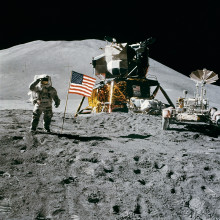
Could the Hubble Telescope see footprints on the moon?
Dave Ansell took a look at this question...
Dave - Well, Hubble is an incredible telescope but, looking up its resolution, I reckon it has a resolution of 0.05 arcseconds: that means it can distinguish two objects which are 0.000013 degrees apart; any closer together than that and they merge into one object.
Chris - In practical terms, what does that mean?
Dave - That means if something - the distance of the moon away from us...
Chris - So about a quarter of a million miles to the moon?
Dave - Yes, about 384,000 kilometres - that means you can see something 9 to 10 metres across on the moon, so probably not.
Chris - That would be a very big footprint - Bigfoot literally. Okay, thank you Dave!
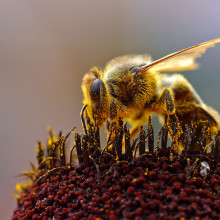
How did the waggle dance evolve?
We put this first to Andy Barron, Lecturer in the Department of Brain Behaviour and Evolution at Macquarie University. So how did the waggle dance evolve? When a forager bee has found good food, she comes back to the hive, she performs a waggle dance and these movements in the dance - very precisely and symbolically represent the direction and the distance to the food source. And then other bees are following that dancer and they read those directional-specific movements and then they head out of the hive and go and find the food. Now what we know is that performing the dance and reading the dance is entirely instinctive. So we have to infer that this whole complex, symbolic communication system is somehow programmed by the honeybee genome. Now how a genome programmes behaviour with this level of complexity I have absolutely no idea, and I don't think anybody has any idea; but there's nine honeybee species, and the dances of the dwarf honey bee:, Apis Florea - these are the most primitive honeybees - they have less complex directional information than the European Honeybee; the honeybee that we're familiar with. Maybe after millions of years this alerting signal was refined to add more space-specific information and over time you get something of a dance and symbolic as the waggle dance. But again, look, as to how the bee genome and how the bee brain have been modified by the evolutionary process to give bees this dance language, really we still have absolutely no idea, but it's a great question - it is an absolutely fantastic question.We also asked Jurgen Tautz head of the Bee Group at the University of Wurzburg in Germany.The recruitment of nest mates to food source is very important in all social insects. Most primitive we find this represented in bumblebees; where forager bumblebees, after returning to the nest, simply are just alarming their nest mates to give them the simple message: I've found something interesting to go for but there is no information whatsoever about the location. The next step then we find in stingless bees - so experienced bees which know where to go and non-experienced bees leave the nest together and they arrive at the desired location in groups. Then we find in the honeybees this dance language where bees inside the nest, tell their nest mates through this dancing movement about the geographical location. Between the stingless bee recruitment and the honeybee recruitment there's really a big gap in evolution. The reason why I think that the dance language as you find in the honeybee has evolved and not like in bumblebees or stingless bees has also to do with the precision of the nest they are building. The combs make the surfaces on which the dance is performed and these combs are extremely regular and they hang absolutely perpendicular so the direction of gravity inside the nest can be used as a direction of reference. Bumble nests are very sloppy, and stingless bees' nests, they are also not very regular so there would not have been the opportunity to evolve such a language in other closely-related species.

53:30 - Do rockets punch holes in the ozone layer?
Do rockets punch holes in the ozone layer?
Chris Smith - Well, Fran, we know that the major culprit for making holes in the ozone layer are chemicals called CFCs - chloro-fluoro carbons. These are agents that were used in aerosols - even in asthma inhalers - but also in fridges as refrigerants; they were used in huge amounts until the Montreal Treaty came in, in the late 80s to try and ban them.
What provoked that was that a group of scientists including Brian Gardner (who appeared here on The Naked Scientists a few years back) had actually noticed this massive hole opening up over Antarctica; this hole actually grew to be the size of Australia at its peak.
Luckily it did eventually stop growing, and it's actually beginning to shrink a little bit now and that's because we have stopped using these CFC chemicals.
The reason that they concentrate down in the Antarctic where the hole formed is because the Antarctic is an isolated continent. It's completely surrounded by ocean and this creates something called a circumpolar current, and this has a whirlpool-like effect on the air; this draws in and concentrates these CFC molecules over the Antarctic during winter, when it's very dark.
The CFCs then accumulate in high clouds over the Antarctic. When the sun comes out the following spring, UV in the sunlight attacks and breaks down the CFCs and they get turned into reactive chemicals that can react with ozone and deplete it. They are, by far, in a way the worst culprit.
As far as rockets are concerned, we don't send enough rockets and spaceships up into space to make a huge difference, I wouldn't have thought, in grand scheme of things.
So I think although we have to be environmentally conscious, the benefit of sending rockets into space in terms of what they can do for satellites and furthering research is far greater than the small bit of damage they might make to the ozone layer.
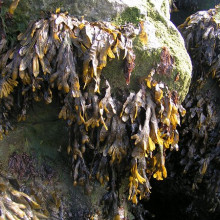
How does photosynthesis work underwater?
Helen Scales - That's a great question; fundamentally photosynthesis actually began in the oceans - underwater - because that's where plants and algae first evolved. They then moved onto land.
So light definitely gets into the upper layers of the ocean, and that's where the process of photosynthesis traps that light and converts it into energy - into carbohydrates really, that the rest of the food chain relies on.
Algae has to maintain itself in the upper layers of the ocean because once you get further down into the depths of the ocean, first of all red light gets absorbed which is why the oceans look blue and green colours. Light does get down there but it has to maintain itself up in the high levels.
So if you look, for example, at coral reefs, they have plants - algae - living inside their tissues, and those types of coral have to maintain themselves by growing on big reefs, depositing calcium carbonate in great big layers that build up and build up and as sea levels rise, they have to keep up their pace to keep themselves in that lovely, sunny, gorgeous bit of tropical oceans where we all love to go snorkelling and diving.
But as you go deeper down, they tend to peter out, and there are some types of corals actually that don't have photosynthetic algae in their tissues; they actually rely on catching their food like other animals. They catch it from the water, and those are the ones that live deeper down.
So you do see this zonation. You see similar things on the beach with different types of seaweed using different types of pigments to harness light both in the open areas where there's lots of light and then lower down where light start to get absorbed.
Dave - Is that why seaweed is a sort of reddish colour, because it doesn't absorb red if it's deep under water; blue light can get all the way down so it absorbs blue but not red?
Helen Scales - Some of the seaweeds are red seaweeds, that's right and that's a kind of branch of the algae. They have different types of pigment that do use up the green and the blue lights and red is reflected back and that's why they look red.
Chris Smith - So the bottom line is that, basically, there's very little difference between the photosynthesis that's occurring in the oceans and the photosynthesis on land because it's all the same process. It's just been tweaked a little bit to make use of the light that's available and there is slightly more light of different wavelengths available out of the water than in it but the bottom line is it's pretty much all the same.
Helen Scales - It is and it is very important in the oceans. So much photosynthesis goes on and carbon dioxide gets fixed in that process in the oceans and we know that's really important too.
Chris Smith - Of course, because the oceans are the biggest carbon dioxide sink of the whole planet, aren't they?

Why store propane but not natural gas?
Dave - It's all about boiling points really.
If you look, the bigger the molecule, the higher temperature it will boil at. So butane will boil at sort of -0.1 degrees Centigrade, so you don't need very much pressure to keep that as a liquid at room temperature so you can have really quite weak tanks.
Propane boils at about -42 degrees Centigrade, which means you have to have 10 or 12 atmospheres of pressure to keep that a liquid at 40 degrees Centigrade. But that's not difficult to make with a small, light steel tank; and it's quite practical to carry around, that would be sensible.
Natural gas is methane, which boils at -161 degrees Centigrade, roughly. To keep that a liquid at all you have to have tanks that are strong enough to survive 200 to 220 atmospheres of pressure, and from the experiment that we were doing earlier that's going to involve about 2,000 tonnes of pressure on every square metre of that tank, so it's going to have to be made up incredibly strong steel, it's going to be very heavy. It just makes it expensive and impractical to carry around - and very dangerous to carry around in vehicles.
Chris Smith - So that's why we have it coming down the pipeline but we don't store it locally. We use propane, much easier to compress and get lots of it into a small space in a tank.
Dave - That's right. In a pipeline it never has to be at a very high pressure. You never have to liquefy it...










Comments
Add a comment